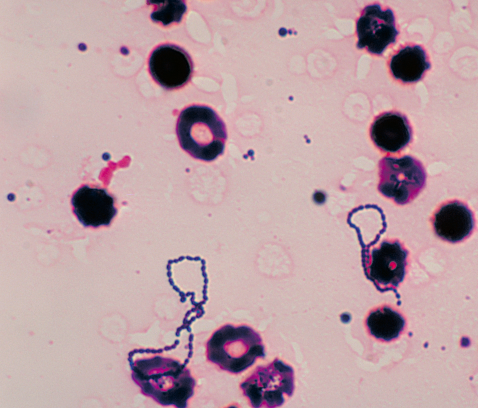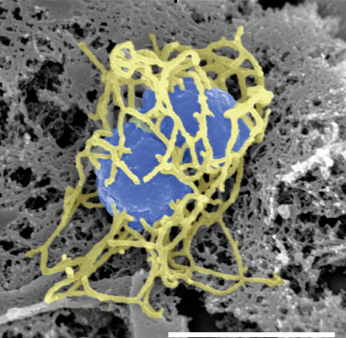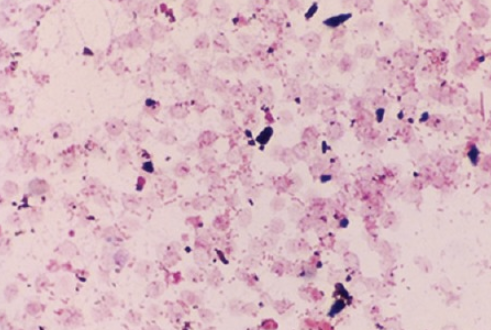Medical Pharmacology Chapter 35 Antibacterial Drugs
Penicillin G and Penicillin V Pharmacology and Therapeutics
Mechanism of Action (Summary)
![]() Penicillin
G and penicillin V are β-lactam antibiotics that exert a
bactericidal
effect by inhibiting bacterial cell wall synthesis1
Penicillin
G and penicillin V are β-lactam antibiotics that exert a
bactericidal
effect by inhibiting bacterial cell wall synthesis1
Penicillins bind to penicillin-binding proteins (PBPs), the enzymes (e.g. DD-transpeptidase) responsible for the final cross-linking step of peptidoglycan in the bacterial cell wall.1,2
By acylating the active site of PBPs with their β-lactam ring, penicillins prevent peptidoglycan cross-links from forming, which critically weakens the cell wall.1
The weakened cell wall cannot maintain osmotic integrity; as a result, water influx leads to cell swelling and lysis.1
Accumulated cell wall precursors trigger bacterial autolytic enzymes (autolysins) to degrade the existing cell wall, amplifying the bactericidal effect1
This mechanism selectively targets proliferating bacteria and explains penicillin’s synergy with aminoglycosides: inhibition of cell-wall synthesis allows aminoglycosides to better penetrate and reach their intracellular ribosomal targets.1
![]() Penicillins
do not affect human cells (which lack peptidoglycan walls),
accounting for their
high therapeutic index
in clinical use.
Penicillins
do not affect human cells (which lack peptidoglycan walls),
accounting for their
high therapeutic index
in clinical use.
Antimicrobial Spectrum and Activity
Penicillin G (benzylpenicillin) and Penicillin V (phenoxymethylpenicillin) are natural, first-generation penicillins with a relatively narrow antimicrobial spectrum focused primarily on Gram-positive organisms.2
These agents are highly active against Gram-positive cocci such as Streptococcus species (Groups A for example Streptococcal Pharyngitis3, B, C, G, and viridans streptococci)4 and many Streptococcus pneumoniae (pneumococcus) strains.2
 |
|
Enterococcus faecalis is also susceptible, though serious enterococcal infections may be approached with penicillin combined with an aminoglycoside for bactericidal synergy.2
First-choice antibiotics for enterococcal infections have been approached with combinations of aminopenicillins, vancomycin, daptomycin, and linezolid.
In approaching endocarditis caused by Enterococcus faecalis, high-dose ampicillin in combination with ceftriaxone may provide optimal treatment in view of nephro-oto-, and vestibular toxicities associated with aminoglycosides.5
Effective treatment of Enterococcus faecalis infections has been demonstrated utilizing combination therapy involving bacteriophage (phage) and ▀-lactam antibiotics. Further study is required before phage-antibiotic may become implemented clinically.6
Note that enterococci, Gram-positive, anaerobic bacteria are recognized uropathogens.
These bacteria are also the leading cause of variety of infection such as endocarditis, bacteremia, pneumonia, endocarditis as well as UTIs. Enterococci have also been identified as the second-leading pathogen in catheter-associated UTIs.
![]() Furthermore, enterococci exhibit highly malleable genes
facilitating rapid development and extensive development of
resistance to many antibacterials (for example, vancomycin)
enterococci also exhibit natural resistance to other antibiotics
such as quinolones, oxazolidinone, and cephalosporins.6
Furthermore, enterococci exhibit highly malleable genes
facilitating rapid development and extensive development of
resistance to many antibacterials (for example, vancomycin)
enterococci also exhibit natural resistance to other antibiotics
such as quinolones, oxazolidinone, and cephalosporins.6
Non-penicillinase-producing Staphylococcus aureus are intrinsically susceptible to penicillin, but most staphylococci now produce penicillinase and are resistant.
Penicillin G/V also cover certain Gram-positive rods (bacilli) such as Corynebacterium diphtheriae, Bacillus anthracis (anthrax), Erysipelothrix rhusiopathiae, and Clostridial species (e.g. C. perfringens causing gas gangrene).1,2
Penicillin G/V have limited Gram-negative coverage: notable susceptible organisms include: Neisseria meningitidis (meningococcus) and Pasteurella multocida1,2
Most common cause of infection after a scratch or bite from a domestic pet.7
 |
|
 |
|
Historically Neisseria gonorrhoeae (gonococcus) was penicillin-sensitive1,2
Natural penicillins have activity against most anaerobes of the oral flora (e.g. Peptostreptococcus, Actinomyces israelii), but not against Bacteroides fragilis (which produces β-lactamase).
Spirochetes are very susceptible: penicillin G is the treatment of choice for Treponema pallidum (syphilis) and remains highly effective, as T. pallidum has never developed significant resistance to penicillin.1
Penicillin G also treats Leptospira and is used in Lyme disease (caused by Borrelia burgdorferi) in certain situations.9
Overall, penicillin G and V retain excellent activity against many Gram-positive aerobes, select Gram-negatives, and other pathogens (spirochetes, anaerobes) if they do not produce β-lactamase.9
August, 2025
|
|
This Web-based pharmacology and disease-based integrated teaching site is based on reference materials, that are believed reliable and consistent with standards accepted at the time of development. Possibility of human error and on-going research and development in medical sciences do not allow assurance that the information contained herein is in every respect accurate or complete. Users should confirm the information contained herein with other sources. This site should only be considered as a teaching aid for undergraduate and graduate biomedical education and is intended only as a teaching site. Information contained here should not be used for patient management and should not be used as a substitute for consultation with practicing medical professionals. Users of this website should check the product information sheet included in the package of any drug they plan to administer to be certain that the information contained in this site is accurate and that changes have not been made in the recommended dose or in the contraindications for administration. Advertisements that appear on this site are not reviewed for content accuracy and it is the responsibility of users of this website to make individual assessments concerning this information. Medical or other information thus obtained should not be used as a substitute for consultation with practicing medical or scientific or other professionals. |